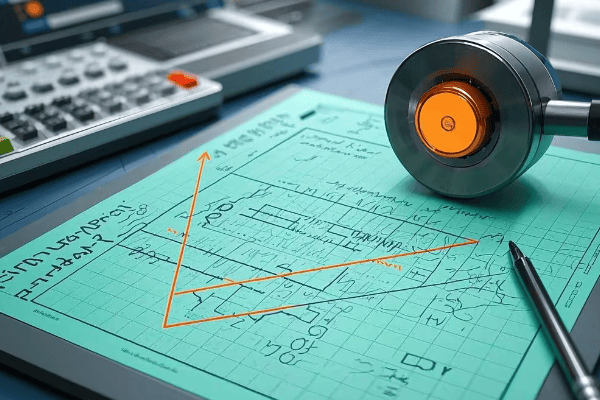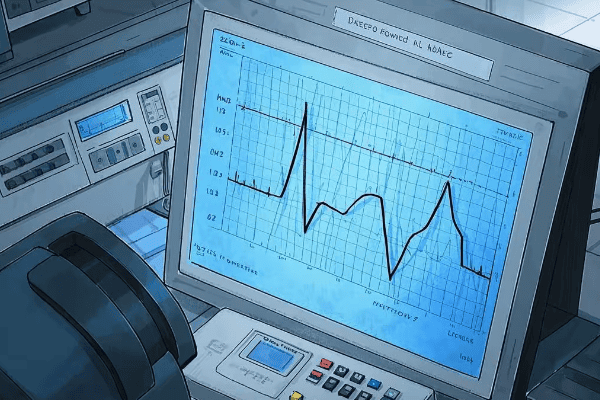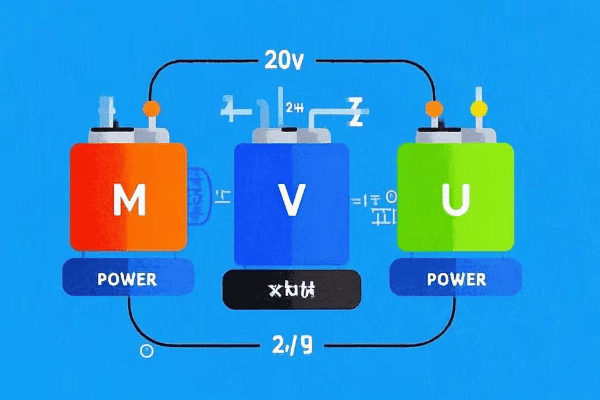Unraveling the Power Puzzle: Active, Reactive, and Apparent Power Explained?
Are you confused by your electricity bill? You’re not alone. Many people struggle to understand the different types of power in electrical systems.
Active power, reactive power, and apparent power are three key concepts in electrical engineering. Active power does useful work, reactive power supports magnetic fields, and apparent power is the total power supplied. Understanding these helps in efficient energy management and system design.

In my 20 years as an electrical engineer, I’ve seen countless professionals and homeowners grapple with these concepts. This guide will demystify these power types, their relationships, and their practical implications. Whether you’re a curious homeowner or an aspiring engineer, you’ll gain valuable insights into the world of electrical power.
Active Power: The Worker Bee of the Electrical World?
Have you ever wondered what you’re actually paying for on your electricity bill? The answer lies in understanding active power.
Active power, measured in watts (W), is the power that does useful work in electrical systems. It’s the energy converted into light, heat, or mechanical motion. This is the power you’re billed for and the one that directly contributes to your electrical devices’ functionality.

Active power is the backbone of our electrical systems. It’s what makes our appliances work, our lights shine, and our motors run. Let’s dive deeper into this crucial concept.
What is Active Power?
Active power, also known as real power or true power, is the portion of electrical power that performs actual work. It’s measured in watts (W) or kilowatts (kW). The formula for calculating active power is:
P = VI cosφ
Where:
- P is active power in watts (W)
- V is voltage in volts (V)
- I is current in amperes (A)
- cosφ is the power factor
Practical Applications
Active power finds applications in various sectors:
- Household Appliances: Your 60W light bulb consumes 60W of active power to produce light.
- Industrial Motors: The power that turns the shaft of an electric motor is active power.
- Electric Heating: The heat produced by an electric heater is a direct result of active power consumption.
- Data Centers: The power consumed by servers and cooling systems is primarily active power.
- Electric Vehicles: The power used to charge EV batteries and drive their motors is active power.
I once worked on a project to optimize energy consumption in a manufacturing plant. By focusing on reducing active power usage through more efficient motors and lighting, we managed to cut the plant’s electricity bill by 25%.
Energy Efficiency
Understanding active power is key to improving energy efficiency. Here’s a table showing typical active power consumption of common household appliances:
| Appliance | Active Power Consumption (W) |
|---|---|
| LED Bulb | 8-12 |
| Refrigerator | 100-200 |
| Laptop | 50-100 |
| Air Conditioner | 1000-1500 |
| Electric Oven | 2000-2500 |
By being aware of the active power consumption of your devices, you can make informed decisions about energy usage and potentially reduce your electricity bills.
Latest Trends
- Smart Meters: Advanced metering infrastructure (AMI) allows for real-time monitoring of active power consumption.
- IoT-enabled Devices: Smart appliances can optimize their active power consumption based on usage patterns and electricity prices.
- Demand Response Programs: Utilities are implementing programs that incentivize consumers to reduce their active power consumption during peak demand periods.
Active power is crucial, but it’s just one part of the power puzzle. In the next sections, we’ll explore reactive and apparent power to complete the picture.
Reactive Power: The Silent Supporter in Electrical Systems?
Have you ever noticed that some electrical devices, like motors or fluorescent lights, seem to draw more power than they actually use? This mysterious extra power is called reactive power.
Reactive power, measured in volt-amperes reactive (VAR), is the power used to maintain electromagnetic fields in AC systems. It doesn’t do useful work but is crucial for the operation of many electrical devices. Understanding reactive power is key to efficient power system design and operation.

Reactive power plays a vital role in our electrical systems, even though it doesn’t directly perform work. Let’s explore this concept in more detail.
What is Reactive Power?
Reactive power is the portion of electrical power that flows back and forth between the source and the load. It’s measured in volt-amperes reactive (VAR). The formula for calculating reactive power is:
Q = VI sinφ
Where:
- Q is reactive power in VAR
- V is voltage in volts (V)
- I is current in amperes (A)
- sinφ is the sine of the phase angle between voltage and current
Practical Applications
Reactive power is crucial in various applications:
- Electric Motors: It creates the magnetic fields that allow motors to operate.
- Transformers: These devices rely on reactive power for voltage transformation.
- Fluorescent Lighting: These lights require reactive power for their ballasts to operate.
- Wind Turbines: Induction generators in wind turbines consume reactive power to generate electricity.
- HVDC Transmission: High-voltage direct current transmission systems use reactive power for voltage support and system stability.
I once worked on a project in a large office building where we were experiencing frequent voltage fluctuations. After investigation, we found that the building’s HVAC system was drawing a large amount of reactive power. By installing power factor correction capacitors, we stabilized the voltage and reduced the building’s overall power consumption by 15%.
Power Factor
Reactive power is closely related to the concept of power factor. Here’s a table showing typical power factors for different types of electrical loads:
| Load Type | Typical Power Factor |
|---|---|
| Resistive (e.g., heaters) | 1.0 |
| Inductive (e.g., motors) | 0.7-0.9 |
| Capacitive (e.g., capacitor banks) | Leading (>1.0) |
| Mixed (typical industrial) | 0.8-0.9 |
A power factor closer to 1.0 indicates more efficient use of electrical power, with less reactive power being drawn.
Latest Trends
- Flexible AC Transmission Systems (FACTS): These advanced power electronics devices control reactive power flow in transmission systems.
- Smart Inverters: Modern solar inverters can now provide reactive power support to the grid.
- Dynamic VAR Compensation: Advanced systems provide real-time reactive power compensation, improving power quality and system stability.
Understanding reactive power is crucial for maintaining efficient and stable electrical systems. Next, we’ll explore apparent power and how it relates to both active and reactive power.
Apparent Power: The Big Picture in Electrical Systems?
Have you ever wondered why electrical equipment is rated in VA (volt-amperes) instead of watts? The answer lies in understanding apparent power.
Apparent power, measured in volt-amperes (VA), is the total power supplied by an electrical system. It’s the vector sum of active and reactive power. Apparent power is crucial for sizing electrical equipment and understanding the total capacity of power systems.

Apparent power provides a comprehensive view of the power in an electrical system. Let’s delve deeper into this concept.
What is Apparent Power?
Apparent power is the total amount of power supplied by a source or consumed by a load in an AC circuit. It’s measured in volt-amperes (VA). The formula for calculating apparent power is:
S = VI
Where:
- S is apparent power in VA
- V is voltage in volts (V)
- I is current in amperes (A)
Alternatively, apparent power can be calculated as:
S = √(P² + Q²)
Where:
- S is apparent power in VA
- P is active power in watts (W)
- Q is reactive power in VAR
Practical Applications
Apparent power is crucial in various scenarios:
- Equipment Sizing: Electrical equipment like transformers and generators are rated in VA.
- Power System Capacity: It determines the total capacity of power systems, including transmission lines and distribution networks.
- Billing for Large Consumers: Some utilities bill large industrial consumers based on apparent power consumption.
- UPS Systems: Uninterruptible Power Supplies are rated in VA to handle both active and reactive power needs.
- Renewable Energy Integration: Apparent power considerations are crucial when integrating large-scale solar or wind farms into the grid.
I once consulted for a manufacturing plant that was experiencing frequent circuit breaker trips. We found that while their active power consumption was within limits, their apparent power was exceeding the system capacity due to a low power factor. By improving the power factor, we resolved the issue without upgrading the entire electrical system, saving the company significant costs.
Power Relationships
Here’s a table showing the relationships between different power types and power factor:
| Power Type | Formula | Relationship to Power Factor |
|---|---|---|
| Active Power (P) | P = S * cos(φ) | Directly proportional |
| Reactive Power (Q) | Q = S * sin(φ) | Inversely proportional |
| Apparent Power (S) | S = √(P² + Q²) | Inversely proportional |
| Power Factor | PF = P / S | – |
Latest Trends
- Microgrid Systems: Advanced microgrid controllers optimize apparent power flow within isolated or grid-connected microgrids.
- Power Quality Analyzers: New generation analyzers provide real-time monitoring of apparent power.
- AI in Power Systems: Artificial Intelligence is being applied to predict and optimize apparent power flow in complex power systems.
Understanding apparent power is crucial for efficient electrical system design and operation. It helps in proper equipment sizing, power factor management, and overall system optimization.
Conclusion
Understanding active, reactive, and apparent power is crucial for efficient electrical system design and operation. Active power does useful work, reactive power supports magnetic fields, and apparent power represents the total system capacity. By managing these power types effectively, we can optimize energy usage, reduce costs, and improve system reliability. Consider conducting an energy audit, exploring smart metering options, and staying informed about new technologies in power management to create a more sustainable and reliable electrical infrastructure for the future.
Free CHBEB Transformer Catalog Download
Get the full range of CHBEB transformers in one catalog.
Includes oil-immersed, dry-type, pad-mounted, and custom solutions.
Quick Message
Request A free quote
We'd like to work with you
- +86 15558785111
- [email protected]
- +86 15558785111
What We Do
CHINA BEI ER BIAN (CHBEB) GROUP, with 218 million in registered capital, originated from Beijing Beierbian Transformer Group. Headquartered in Beijing for R&D, it operates major production bases in Nanjing and Yueqing, producing high-quality products.
Latest Product
address
BeiJing
No 3,RongJing East Road,BeiJing Economic Technological Development Area,BeiJing,China
JiangSu
No 7️Xiangfeng Road,Jiangning,NanJing,JiangSu,China
WenZhou
No.211, Wei 16 Road, Industrial Zone, Yueqing, Wenzhou, Zhejiang, China.
XiangYang Industrial Zone ,YueQing,WenZhou,ZheJiang,China
contact us
- [email protected]
- +86 13057780111
- +86 13057780111
- +86 15558785111
Copyright © Bei Er Bian Group


